At TrustPoint Hospital we believe education is an important first step in the effort to heal from cardiac conditions. Understanding the signs, symptoms, and effects of cardiac conditions can help you get the right type and level of care for yourself or a loved one.
Understanding Cardiac Conditions
Learn about Cardiac Conditions
Cardiac conditions refer to those that relate to the heart and the cardiovascular system. Examples of different types of cardiac conditions and procedures that are used to treat cardiac conditions are discussed briefly in the following:
Heart attack: A heart attack occurs when the oxygen that is supplied to the heart muscle is either drastically reduced or eliminated completely. This oxygen deficiency is typically caused by the development of plaque build-up in the arteries. If that plaque ruptures, a blot clot can form, and that can ultimately result in oxygen failing to reach the heart muscle. Because the heart needs oxygen to survive, when the supply is cut off, a person’s life becomes endangered. If the blood flow to the heart does not become restored rapidly, that particular section of the heart muscle actually begins to die. A heart attack is also known as myocardial infarction.
Congestive heart failure: When there is a build-up of fluid within the lungs and the body tissues surrounding the lungs, the heart will weaken drastically. As blood begins to congest the abdomen, liver, lungs, and lower extremities, it can prevent the heart from being able to appropriately pump blood. When the heart muscle becomes incapable of pumping blood as well as it is supposed to, congestive heart failure can result.
Coronary artery bypass grafting (CABG): CABG is a surgical procedure that is implemented in order to improve blood flow to the heart. This particular surgery is most commonly used on individuals who are suffering from coronary heart disease, which is a disease that develops when plaque builds up within the coronary arteries. During the CABG procedure, a healthy artery is connected to the blocked artery, allowing for oxygen to begin flowing to the heart muscle once again.
Valve replacement: When an individual experiences medical difficulties due to malfunctioning heart valves, they can benefit from having heart valve replacement. There are four valves within the heart, including the aortic valve, the pulmonary valve, the tricuspid valve, and the mitral valve. Of these valves, the mitral and aortic are the two that are most commonly in need of replacement. When the opening of a valve becomes too narrow, it must be replaced so that blood flow does not remain restricted. Additionally, when a valve regurgitates, or causes blood to move back to the heart instead of moving it forward into the body, it will likewise need to be replaced.
Statistics
Statistics on Cardiac Conditions
According to the American Heart Association, cardiovascular disease in the leading cause of death around the world, claiming more lives than does all types of cancer combined. An estimated 17.3 million people die each year from a type of cardiovascular disease, and experts state that that number is believed to increase to 23.6 million people every year by 2030.
Causes and Risk Factors
Causes & Risks of of Cardiac Conditions
There are a variety of things that place individuals at an increased risk for suffering from certain cardiac conditions. Examples of various risk factors for heart attack and congestive heart failure are listed in the following:
The risk factors associated with heart attack can include, but are not limited to, the following:
- Age (men over the age of 45 and women over the age of 55 are noted as being at a greater risk for suffering from a heart attack than are younger individuals)
- Family history of heart attack
- High blood pressure
- Diabetes
- High cholesterol or high triglyceride levels
- Smoking
- Excessive levels of stress
- History of preeclampsia
- Using illegal drugs, especially stimulants like cocaine and amphetamines
- Obesity
- Lack of physical activity
The risk factors associated with congestive heart failure can include, but are not limited to, the following:
- Age
- Smoking
- Excessive alcohol use
- Obesity
- Diabetes (certain diabetes medications may also increase the risk of suffering from heart failure)
- Physical inactivity
- Family history of heart failure
- Personal or family history of heart disease
- High cholesterol
- High blood pressure
- Having an infection in the heart muscle
- Having previously suffered a heart attack
- Sleep apnea
- Having a viral affection that affects the heart muscle
Signs and Symptoms
Signs and Symptoms of Cardiac Conditions
The signs and symptoms that may present when an individual is suffering from a cardiac condition will vary based on the particular type of condition, as well as how long the symptoms have been present. Examples of symptoms that can be indicative of a heart attack or congestive heart failure are listed in the following:
Symptoms of heart attack:
- Lightheadedness
- Shortness of breath
- Pain or tightness in the arms, back, chest, and/or neck
- Burning sensation in the chest
- Abnormal heartbeat
- Fatigue
- Anxiety
- Nausea or vomiting
- Clammy skin
- Sweating
Symptoms of congestive heart failure:
- Excessive coughing
- Shortness of breath
- Feeling as though one cannot take a deep breath
- Inability to walk at a normal pace
- Inability to exercise or engage in various types of physical activity
- Becoming easily fatigued
- Weakness
- Fainting episodes
- Sleep disturbances
- Loss of appetite
- Swelling of the feet, legs, and/or ankles
- Abdominal swelling
- Rapid / irregular heartbeat
- Coughing up pink-colored mucus
Effects
Effects of Cardiac Conditions
When individuals are suffering and do not receive appropriate treatment for their cardiac conditions, they are susceptible to experiencing detrimental consequences, which can include, but are certainly not limited to, the following:
- Development of blood clots
- Blocked blood vessels
- Irregular heart rhythms
- Cardiovascular system failure
- Oxygen deficiency
Furthermore, when cardiovascular diseases are left untreated, death can be the tragic result.
Co-Occurring Disorders
Co-Occurring Conditions and Disorders
Examples of different physical and mental health disorders and conditions that can co-occur alongside cardiac conditions can include, but are not limited to, the following:
- Cancer
- Thyroid diseases
- Depressive disorders
- Anxiety disorders
- Substance use disorders







